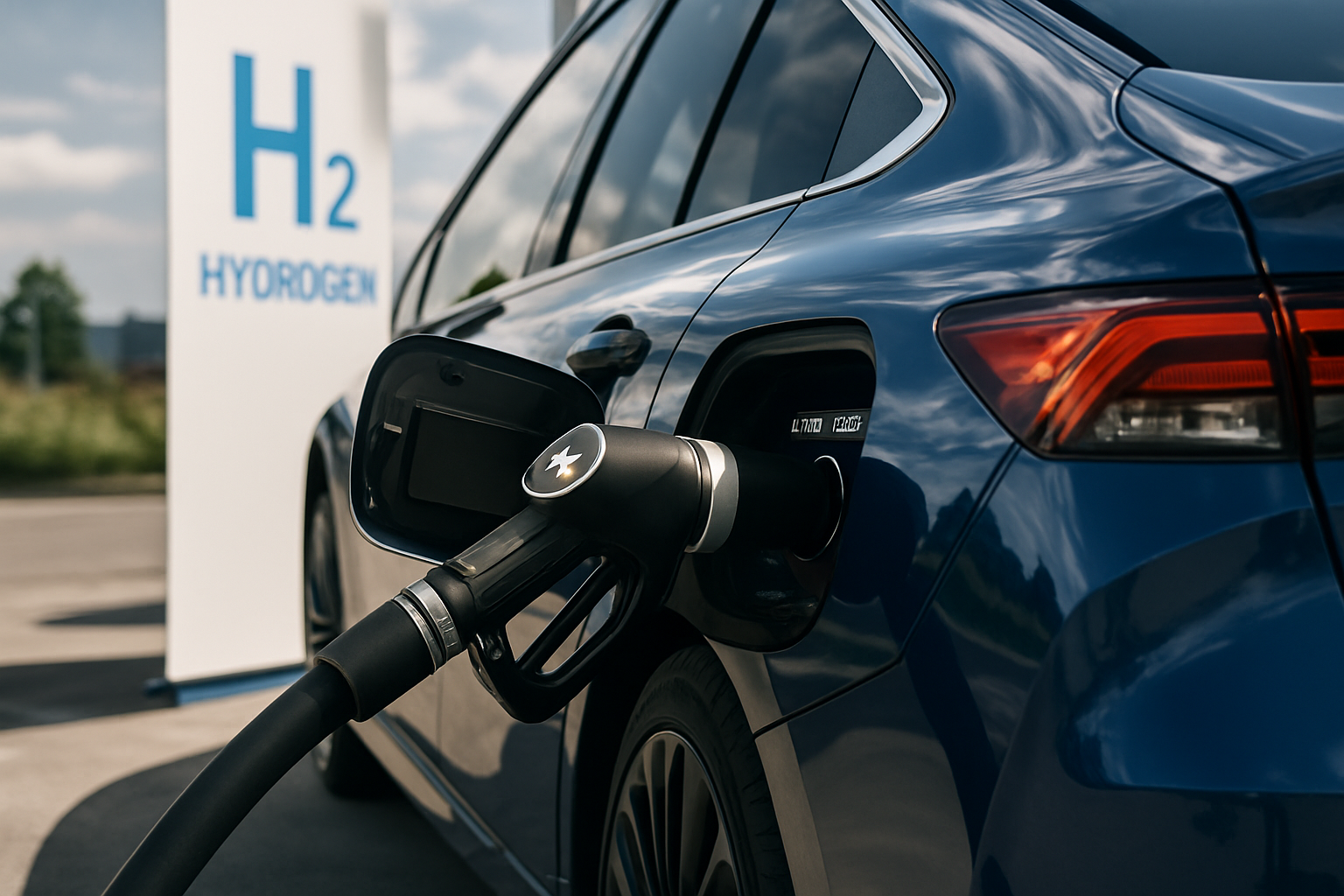The Resurgence of Hydrogen Fuel Cell Vehicles
In the quest for sustainable transportation, hydrogen fuel cell vehicles are making a surprising comeback. Once dismissed as a pipe dream, these zero-emission marvels are now poised to revolutionize the automotive landscape. But what's driving this resurgence, and how might it reshape our roads in the coming years?

The Science Behind Hydrogen Fuel Cells
At the heart of hydrogen fuel cell vehicles lies a remarkable feat of engineering. The fuel cell stack, composed of multiple individual cells, facilitates an electrochemical reaction between hydrogen and oxygen. This process generates electricity to power the vehicle’s electric motor, with water vapor as the sole byproduct.
Each fuel cell consists of an anode, cathode, and electrolyte membrane. Hydrogen enters the anode side, where it’s split into protons and electrons. The protons pass through the electrolyte membrane to the cathode, while electrons are forced through an external circuit, creating an electric current. At the cathode, oxygen from the air combines with the protons and electrons, forming water vapor.
Advantages Over Battery Electric Vehicles
While battery electric vehicles have gained significant traction in recent years, hydrogen fuel cell vehicles offer several distinct advantages. Refueling a hydrogen vehicle takes only a few minutes, comparable to filling up a conventional gas tank. This quick turnaround time addresses one of the main pain points of battery electric vehicles – lengthy charging times.
Moreover, hydrogen fuel cell vehicles boast impressive range capabilities, often exceeding 300 miles on a single tank. This extended range makes them particularly suitable for long-distance travel and heavy-duty applications like trucking and public transportation.
Infrastructure Challenges and Solutions
One of the primary obstacles to widespread adoption of hydrogen fuel cell vehicles has been the lack of refueling infrastructure. However, significant strides are being made to address this issue. Several countries, including Japan, Germany, and South Korea, are investing heavily in hydrogen refueling stations.
In the United States, California leads the charge with over 40 operational hydrogen stations and plans for many more. As the network expands, it’s becoming increasingly feasible for consumers to consider hydrogen vehicles as a viable option for everyday use.
Technological Advancements Driving Adoption
Recent technological breakthroughs have significantly enhanced the viability of hydrogen fuel cell vehicles. Improved fuel cell stack designs have increased efficiency and durability while reducing production costs. Advanced materials, such as graphene-based catalysts, are replacing expensive platinum, further driving down manufacturing expenses.
Additionally, innovative storage solutions are addressing previous concerns about hydrogen’s low volumetric energy density. High-pressure tanks and advanced materials allow for greater hydrogen storage capacity without compromising vehicle design or safety.
Environmental Impact and Sustainability
The environmental benefits of hydrogen fuel cell vehicles extend beyond zero tailpipe emissions. When produced using renewable energy sources like solar or wind power, hydrogen becomes a truly clean fuel from well to wheel. This potential for green hydrogen production aligns perfectly with global efforts to transition to a low-carbon economy.
Furthermore, hydrogen fuel cells offer a promising solution for decarbonizing sectors that are challenging to electrify, such as long-haul trucking and maritime transport. As industries seek ways to reduce their carbon footprint, hydrogen fuel cells present a versatile and scalable option.
The Role of Government Policy and Industry Collaboration
Government support plays a crucial role in accelerating the adoption of hydrogen fuel cell technology. Countries like Japan and South Korea have implemented ambitious hydrogen strategies, offering incentives for both consumers and manufacturers. These policies are driving innovation and investment in the sector, creating a positive feedback loop for technological advancement.
Collaboration between automakers, energy companies, and governments is also fostering rapid progress. Joint ventures and partnerships are pooling resources and expertise to overcome technical challenges and build out the necessary infrastructure. This coordinated approach is essential for creating a viable hydrogen economy.
Future Prospects and Market Outlook
As technology continues to evolve and infrastructure expands, the future looks bright for hydrogen fuel cell vehicles. Market analysts predict significant growth in the coming years, with particular strength in commercial and heavy-duty applications. Several major automakers have recommitted to hydrogen technology, signaling a renewed faith in its potential.
While battery electric vehicles currently dominate the alternative fuel market, hydrogen fuel cells are carving out their own niche. The technology’s unique advantages make it well-suited for specific use cases, suggesting a future where multiple zero-emission technologies coexist to meet diverse transportation needs.
In conclusion, the resurgence of hydrogen fuel cell vehicles represents a fascinating development in the automotive world. As we navigate the complex challenges of sustainable transportation, these innovative vehicles offer a compelling vision of a cleaner, more efficient future on our roads. With continued investment and technological progress, hydrogen fuel cells may well play a pivotal role in reshaping the automotive landscape for generations to come.





